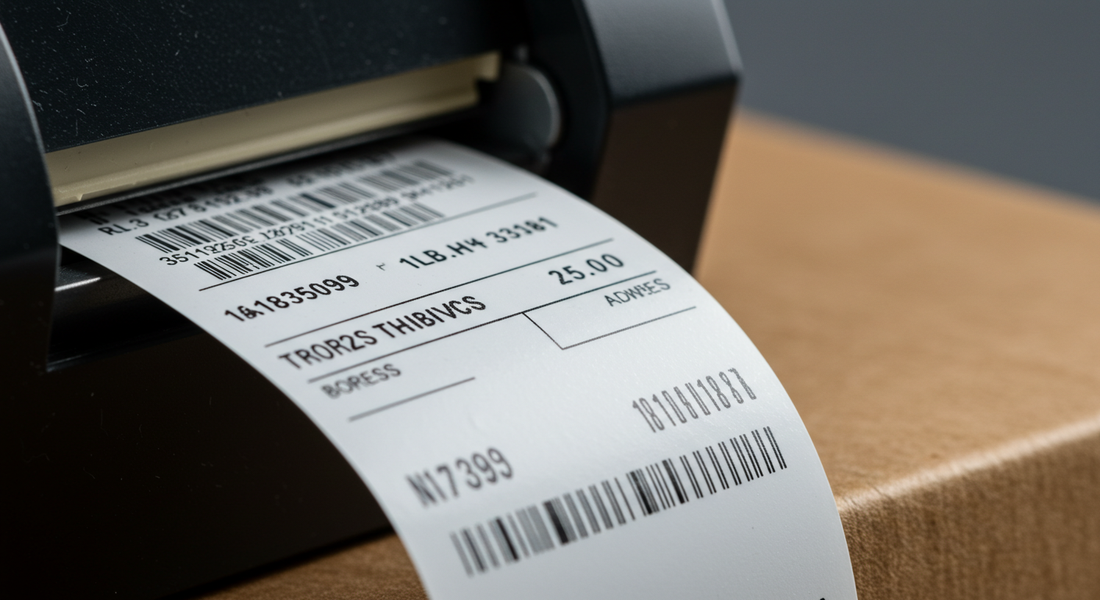
How to Choose the Right Label Type for Your Needs
If you have ever wondered, "What kind of label do I truly require?"—you are certainly not the only one.
Let us explore the fundamentals (and some advanced concepts) in a clear and straightforward manner.

1. Direct Thermal Labels: Simple and Efficient
Best for: Shipping labels, receipts, short-term labeling
How it works: Direct thermal labels are printed using heat—no ink or toner needed. Just load them into your direct thermal printer (like Rollo or Zebra), and you’re good to go.
Pros:
-
No ink or ribbons needed
-
Cost-effective
-
Perfect for high-speed shipping tasks
Cons:
-
Not great for long-term use (labels fade with heat, light, or age)
-
Can’t handle high temperatures or harsh environments
2. Thermal Transfer Labels: Durable and Long-Lasting
Best for: Inventory, product labels, cold storage, asset tracking
How it works: These require a ribbon and heat to transfer ink onto the label. It’s a bit more technical but provides high-quality, durable prints.
Pros:
-
Super durable and fade-resistant
-
Excellent for barcode clarity and long-term storage
-
Works well in extreme temps
Cons:
-
Requires ribbons (slightly more setup)
-
Slightly higher cost than direct thermal
3. Inkjet Labels: Colorful and Custom
Best for: Product packaging, branding, small business marketing
How it works: Inkjet labels are printed using—you guessed it—an inkjet printer. They’re great for full-color designs and smooth graphics.
Pros:
-
Vibrant, high-resolution color
-
Wide variety of finishes (matte, glossy, waterproof)
-
Perfect for small batch product labels
Cons:
-
Requires ink refills
-
Not always smudge-proof unless specified
4. Laser Labels: Clean and Office-Friendly
Best for: Filing, address labels, office use
How it works: Laser printers use toner to fuse the image onto the label. Clean, professional, and perfect for standard office settings.
Pros:
-
Crisp, sharp prints
-
Smudge-proof
-
Fast and efficient
Cons:
-
Limited label types for laser printers
-
Not ideal for harsh or outdoor conditions
5. Label Format: Roll vs. Fanfold
Roll Labels are wound onto a cardboard core and are typically used with desktop or industrial printers. Easy to load, space-saving, and ideal for fast-paced printing environments.
Fanfold Labels are stacked like an accordion and often used for high-volume print jobs. They hold more labels per stack and are easy to reload, making them perfect for larger warehouses or long print runs.
So… What Label Type Should You Use?
Here’s a quick cheat sheet:
| Task/Use Case | Label Type |
|---|---|
| Shipping (short-term) | Direct Thermal Labels |
| Freezer or warehouse storage | Thermal Transfer Labels |
| Colorful branding or packaging | Inkjet Labels |
| Office labeling or filing | Laser Labels |
| Bulk labeling with fewer reloads | Fanfold Labels |
| Desktop printing convenience | Roll Labels |
Still unsure? No stress—we’ve got label pros at 4x6labels ready to help you match your printer, product, and packaging needs.
Final Thoughts
If you have ever wondered, "What kind of label do I truly require?"—you are certainly not the only one. Whether it's direct thermal, inkjet, fanfold, or roll labels, we are here to assist you. Let us explore the fundamentals (and some advanced concepts) in a clear and straightforward manner.
👉 Browse our collection at 4x6labels and let’s make labeling easy, durable, and maybe even a little fun.
